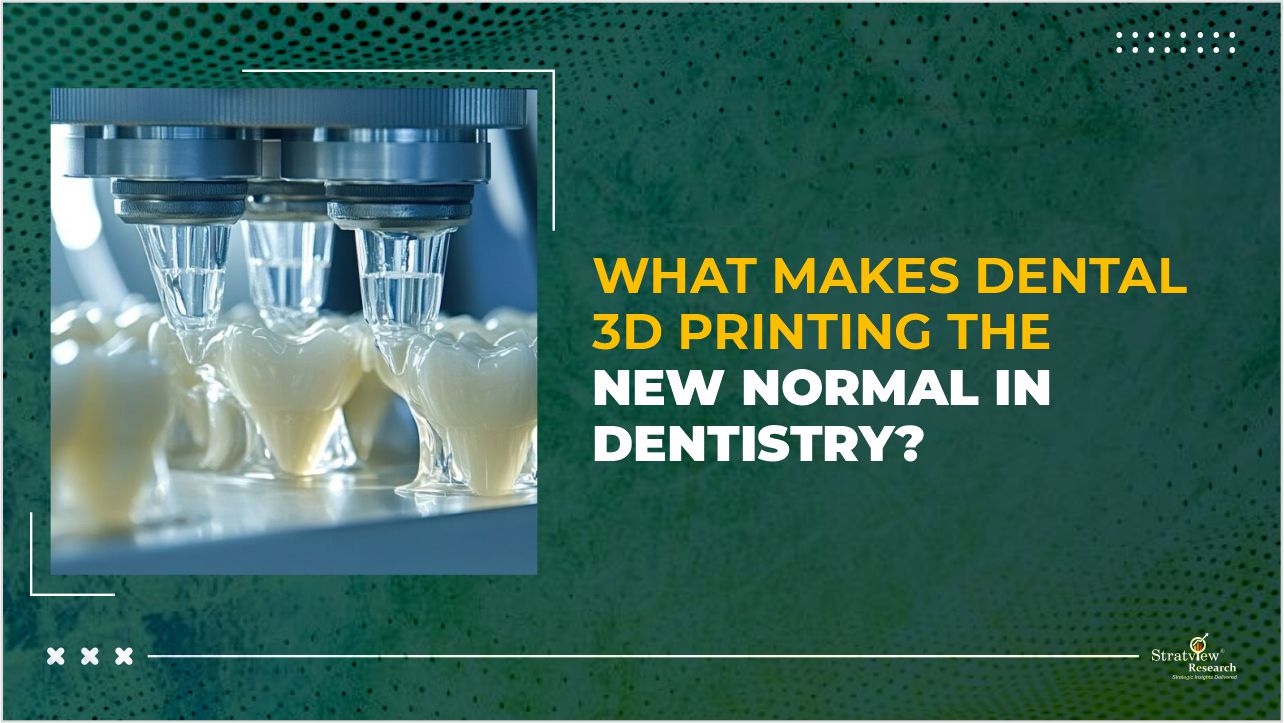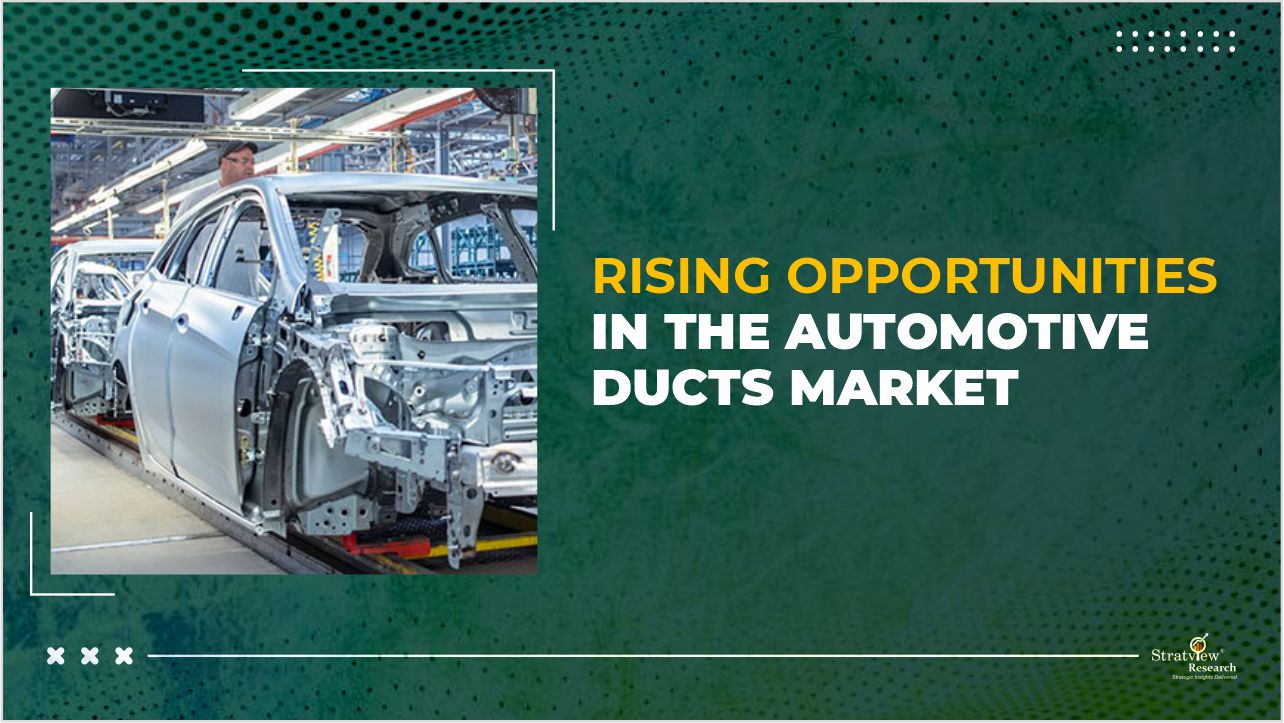
Stratview Research reports that the global Dental 3D Printing Market is expected to surge from USD 1.9 billion in 2020 to USD 8.6 billion by 2026, reflecting a CAGR exceeding 29.2%.
Have you ever had a dental carry? If the answer is no, then consider yourself one of the lucky ones.
According to FDI World Dental Organization, in 2019, it was estimated that 2.3 billion people suffer from tooth decay (dental caries) of permanent teeth, globally. And among them, more than 530 million are children. It is clear by these numbers that dental problems are prevalent among a large size of the world populace and to address it, a robust dental care infrastructure is needed around the world which is lightning quick in its services.
To achieve the goal of effective and speedy dental care solutions, Dental 3D Printing has been marked as the next big thing in the industry. It has proved itself, by solving problems related to speed, accuracy, exclusiveness, and costing, among others. Now patients can get their exclusive implants that fit them perfectly, without any errors or repetitive procedures at negligible hassle and at 80% less cost than previously, so I ask you one question. Why not?
These printers first came on the world scene in 1980s and gradually underwent multiple makeovers which made them more and more practical and easy to use with limits increased. They found their way into several industries and dentistry was one of them. It has revolutionized the way dentistry used to work before. It is being adopted by practitioners increasingly worldwide. As a result, the growth of this technology is skyrocketing. It is estimated that the Global Dental 3D Printing Market is expected to grow from USD 1.9 billion in 2020 to USD 8.6 billion by 2026 at a CAGR of over 29.2%.
To give you an idea of how this novel technology has impacted the industry, let’s compare the traditional and modern ways of functioning in dentistry.
Dentistry Before & After Dental 3D Printing – A Short Summary
There are two very important areas of dentistry which are largely influenced by 3D printing and comparing those areas will provide us a good level of knowledge to work on.
Dental Impression:
-
Traditionally- Before the name 3D printing hit dentistry, dental impressions were carried out by asking a patient to bite on a rubber-like substance called alginate, and a negative mold was created of the patient’s mouth. Later, this negative mold was filled with plaster-like substance and a positive model of the patient’s teeth were created.
Doing things this way came with its complications. Firstly, the mold was not able to capture the minute details of the mouth, and if the mold had some errors, the process needed to be repeated, making it inconvenient to both the orthodontist as well as the patient. Secondly, it took a lot of time and burnt a hole in the patient’s pockets. -
With 3D Printing- 3D printing helps orthodontist, as well as patients, avoid all these pains. An intraoral wand is used to create a 3D image of the patient’s mouth in no time and due to its precision, the errors are negligible almost every time, saving the time, effort, and money of the patient as well as of the orthodontist. Later the image is used to print the required object, be it a tooth, crown, bridge, or any other thing.
Manufacturing:
-
Traditionally- Manufacturing before 3D printing used to be composed of Injection Molding & Subtractive Manufacturing. Injection molding was used to do mass production of products of the same measurement, such as dental devices and sensors. It is not useful in creating a one-o-kind object. And subtractive manufacturing is the name given to the process of creating objects out of a solid block of material, by cutting it. This process leads to a large amount of wastage.
-
With 3D Printing- 3D printing has been able to address the concerns arising from both of these methods. It is highly effective in not only mass production of objects but also can manufacture a one-of-a-kind dental product. And as it is an additive manufacturing process (manufactures by adding one layer on top of the other), there is no need to worry about any wastage.
These differences are though just the tip of an iceberg when it comes to Dental 3D Printing and its positive effects on dentistry. Let us delve deeper into what makes it such an irreplaceable aspect of the dental industry now.
Dental 3D Printing – Benefits Galore!
Dentists use 3D printing to accomplish tasks such as creating an orthodontic model, printing surgical tools, producing restorative dental implants such as crowns, bridges, dentures et cetera and lastly, they use 3D printing to repair or remove damaged teeth with the help of CAD (Computer Aided Design) software. In accomplishing these tasks, 3D printing has assisted dentists with benefits like never before, such as –
-
Saves the Most Important Resource, Time – 3D Printing has made it possible to get intraoral model in a matter of minutes and that too with extreme precision, with just a wave of a wand, literally! (Intraoral wand, obviously). This image or model is sent electronically to the lab and work can be started immediately on it by the technician. This chain of process saves a lot of time.
-
Cutting Costs for Patients and Dentists – Although it needs an initial investment from the practitioners, it is nothing when compared with the cost of running a clinic with traditional methods over time. 3D printing cuts the overhead cost by 80% and eventually, this gets passed on to the patients as well.
-
Immensely Accurate Services – Machines are extremely precise when they work. Therefore, the models or images that machines make, are exceedingly detailed. The products that are printed based on those models are 100% accurate for the patients.
-
Connectivity & Interoperability with Upcoming Technologies – The data regarding 3D printing and its printers can be stored in a cloud network, to be accessed anytime. Also, the forthcoming of Artificial Intelligence & Machine Learning in Dental 3D Printing is set to open many doors for unknown opportunities and benefits. And the wheels for these changes have now been set in motion by major market players. For example, In March 2022, Dentsply Sirona announced a partnership with Google, Inc. It aims to bring Cloud Storage and AI (artificial intelligence) to digital dentistry and change the ways of storing and accessing data once and for all.
-
One Machine for Everything – With ongoing developments in 3D printing and novel innovations in the machines by manufacturers, several developed printers and resins with the ability to make multiple products are now coming onto the scene. These developments have now expanded the range of products that can be manufactured through these printers.
For instance, in the 1st week of September 2022, Chinese manufacturer, RAYSHAPE, announced the launch of its new printer, EDGE E1, which will be able to create aligners, study models, dentures, splints, and other dental applications, due to its maximum print volume of 192 × 120 × 190 mm and a print speed of up to 40 mm/h.
These benefits will only keep on increasing in the near future as different types of efficient technologies are being incorporated into Dental 3D Printing. Some of the major ones are listed below.
Dental 3D Printing – Technologies Under Scanner!
The technologies that are employed for 3D printing and have garnered much demand have been listed below:
Stereolithography (SLA)

Figure 1 – Working of an SLA Printer
SLA is the world’s first 3D printing technology, invented in 1980s. It uses a computer-guided laser beam, pre-programmed by CAD/CAM software to cure liquid resin into hardened plastic, through a process called photopolymerization.
It finds usage in orthodontic aligners, surgical guides, splints, occlusal guards, complete dentures, and temporary & permanent crowns.
Selective Laser Sintering (SLS)

Figure 2 – Working of an SLS Printer
SLS printers use a high-powered laser to make structures out of polymer powder. This polymer powder supports the part during printing, making the support structures redundant.
SLS is the most common 3D printing technology in the dental industry. It also covers the largest percentage of the Dental 3D Printing Market. Market players are launching SLS printers very often.
For example, in 2022, 3D Systems launched the new SLS 380 printer that uses an algorithm to aid the printer manage eight separately calibrated heaters to control build chamber temperature.
Fused Deposition Modeling (FDM)

Figure 3 – Working of an FDM Printer
FDM, largely known as fused filament fabrication printers, print by melting and extruding thermoplastic to the nozzle, which then deposits it layer by layer to form the object in the build area.
Polyjet/Multijet Printing (PJP/MJP)

Figure 4 – Working of a PJP/MJP Printer
PJP is the printing process where parts are built by jetting thousands of photopolymer droplets and then stiffening them with the use of UV light. Polyjet Printing is the new technology in the block and is gaining traction due to its multiple advantages.
|
3D Printing Technology |
Benefits |
Challenges |
|
Stereolithography (SLA) |
|
|
|
Selective Laser Sintering (SLS) |
|
|
|
Fused Deposition Modeling (FDM) |
|
|
|
Polyjet/Multijet Printing (PJP/MJP) |
|
|
Table 1 : Comparison of Major Dental 3D Printing Technologies
Challenges to Overcome
The challenges for Dental 3D printing are –
- High Initial Cost – Dental 3D printers are costly and are a huge investment right off the bat. However, the overtime cost benefit is huge for the practitioners and market players are now investing heavily to launch slightly cheaper alternatives, which will make more and more people willing to invest in the printers.
For instance, in September 2021, Tupel 3D launched a Kickstarter campaign for high-quality, low-priced 3D dental scanners.
- More the Biocompatibility, More the Acceptability – Conference of Parties-26 (COP26) for climate change was held in Glasgow in October 2021, and it has reaffirmed the goal set by Paris Agreement of restricting the global temperature to well below 2°C above pre-industrial levels. This has repercussions for all industries. Sustainability is the way for the world. Similarly, biocompatibility has become a major requirement for the resins and substances used in Dental 3D printing. The quicker the industry orients itself in that direction, the better it will be for them.
- Lack of Skilled Practitioners – New technologies always take time before they are adopted by people. Similarly, there is a challenge to overcome here in the type of a smaller number of skilled practitioners having the know-how of using 3D printers. To address this concern, multiple companies have taken out awareness and skilling campaigns successfully and are now making an impact in this area.
Way Ahead…
Dental 3D printing is set to keep growing on the basis of huge investments by market players and recurring technological innovations in the years to come. However, its growth trajectory is going to be affected by the developments such as the growing need for the adoption of biocompatible and sustainable substances, and the incorporation of Artificial Intelligence, Cloud Networks, and Machine Learning with the technology among others.
In addition to this, the enhancements in accessibility to the technology in the form of apps and software will in turn improve the capability of chairside 3D printing for the practitioners. And steps towards it have already been taken. For instance, in march 2022, 3D printing company Formlabs partnered with Medit, to enhance chairside 3D printing.
These developments prove that the days when the needed consumer-specific dental implants can be printed right in front of us in a few minutes and that too in a cost-efficient and hassle-free manner, are not so far. Our experiences at the dentist’s clinic are about to get a whole lot better. And the credit for that goes to the new normal in dentistry – Dental 3D Printing!!
Authored by Stratview Research. Also published on – Medical Plastic News


